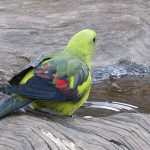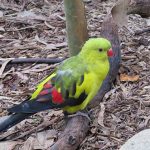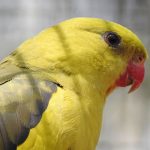REGENT PARROT
The Regent Parrot is a colorful and iconic bird species native to Australia.
It is a medium-sized parrot with an average length of around 40 cm. The male and female have distinct plumage. Males have a predominantly yellow body with a black head, neck, and wings. They also display a bright green patch on the lower back. Females have a more muted coloration, with a predominantly green body and a yellowish head and underparts.
The Regent Parrot is found in specific regions of south-eastern Australia, primarily in Victoria, New South Wales, and South Australia. They inhabit open woodlands, forests, and grasslands with nearby water sources.
These parrots prefer habitats with a mixture of open woodland and grassy areas. They are often found near riverine woodlands, box-ironbark forests, and other similar habitats.
Regent Parrots are typically seen in pairs or small family groups. They are known for their graceful flight and acrobatic maneuvers. They have a variety of calls, including soft whistles, chattering notes, and contact calls while in flight.
The diet of Regent Parrots consists mainly of seeds, fruits, blossoms, and occasionally insects. They feed on a variety of native grasses, seeds from eucalyptus trees, and other plant materials.
Breeding season for Regent Parrots generally occurs from September to January. They are cavity nesters and often use tree hollows or nest boxes for breeding. The female incubates the eggs while the male assists in providing food. The young fledge after about five weeks.
The Regent Parrot is a stunning bird with its vibrant colors and striking markings. It is highly valued by birdwatchers and conservationists, as it represents the unique biodiversity of Australia.
The Regent Parrot is currently listed as a vulnerable species by the IUCN. Their population has declined due to habitat loss, degradation, and fragmentation, primarily caused by land clearing and modification. Efforts are underway to protect and conserve their habitats to ensure the survival of this beautiful species.



